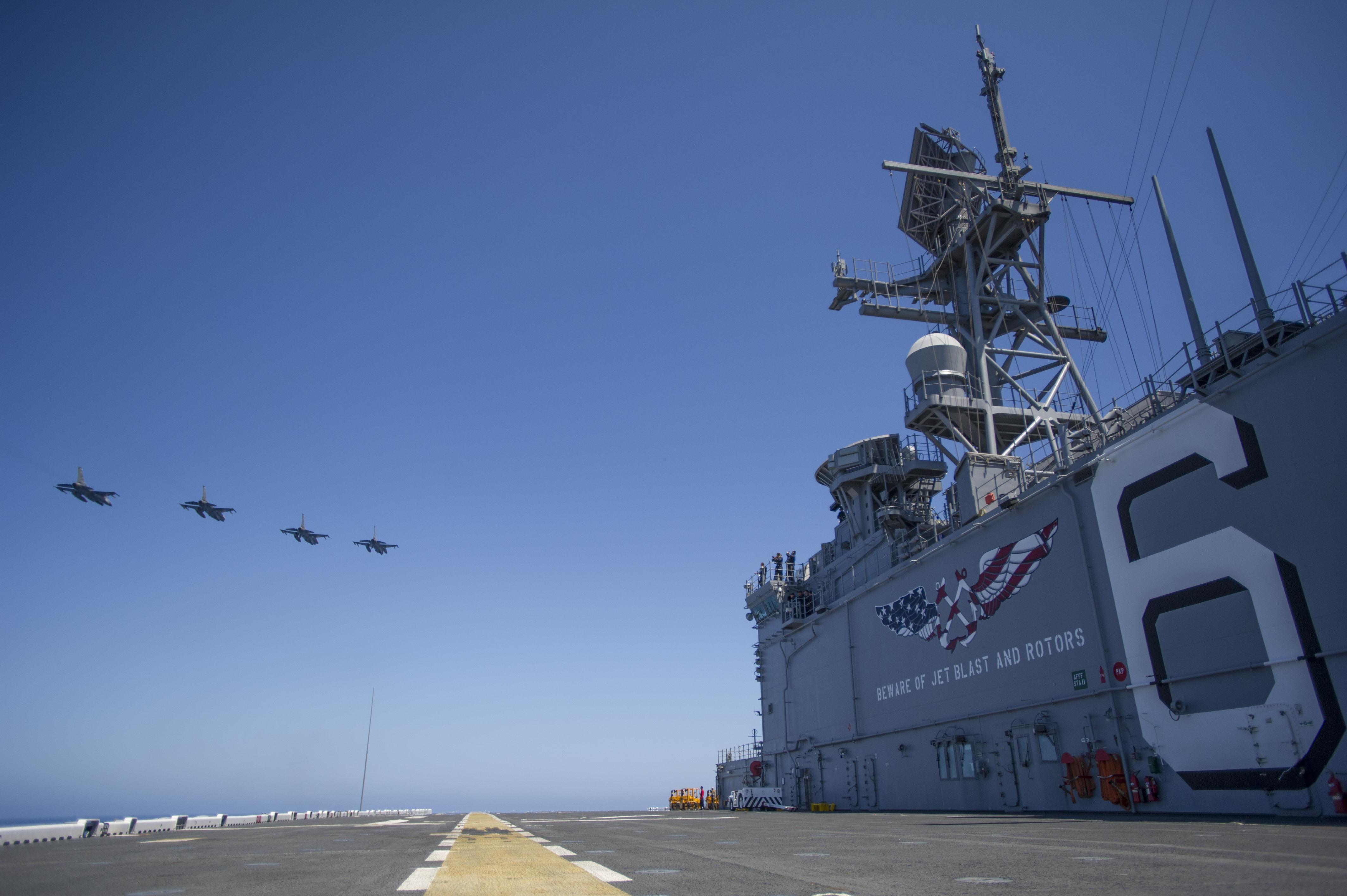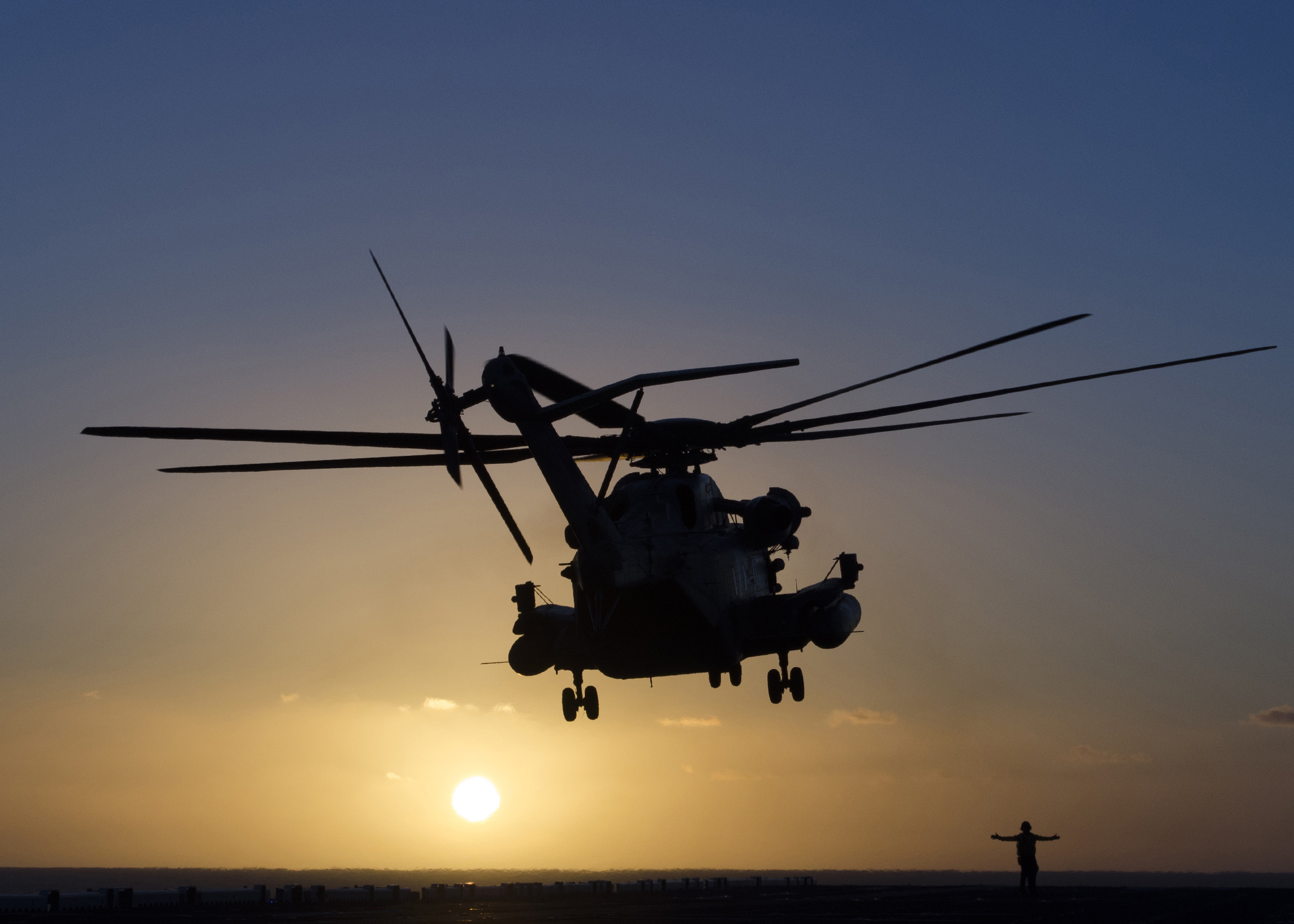
PACIFIC OCEAN (April 27,2015) U.S. Air Force F-16s fly over the amphibious assault ship USS America (LHA 6) during a training exercise on April 27, 2015. US Navy Photo
WASHINGTON, D.C. — The capacity the planned LX(R) amphibious warship will bring to the Navy and Marine Corps Amphibious Ready Groups (ARG) will be key to operating the first two aviation-centric America-class big deck amphibs, the Marines’ aviation head said this week.
Built without welldecks and the capacity to launch Marine landing craft, 45,000-ton USS America (LHA-6) and the under-construction Tripoli (LHA-7) will need the amphibious lift capacity of the current 25,000-ton San Antonio-class (LPD-17) and the under development LX(R) to make up for the loss, said Lt. Gen. Jon Davis, deputy commandant for aviation, on Wednesday.
“The America-class ship was built without a well deck — that’s why LX(R) is so important,” Davis said at a Wednesday Navy and Marine Corps aviation forum sponsored by the Navy League.
“The bottom line is the LPD-17 and LX(R) with a welldeck will cover for that.”
Under current Marine doctrine, an amphibious assault generally requires two-thirds of the force to reach land via landing craft and one-third move through the air (the two-thirds drive, one-third flies doctrine).

The Department of the Navy decided to include welldecks in the remainder of the class beginning with the unnamed LHA-8 in the last several years.
The benefit to an ARG centered on America or Tripoli is the additional mission load allowance (MLA) for the aviation detachment of the embarked Amphibious Ready Group/Marine Expeditionary Unit (ARG/MEU) and more support to newer aircraft like the Bell-Boeing MV-22 Osprey tilt-rotor, the emerging Sikorsky CH-53K King Stallions heavy lift helicopters and the Lockheed Martin F-35B Lighting II Joint Strike Fighter (JSF).

“What those two ships give us is a much larger sized MLA for the [aviation] components and much greater supply of aviation fuel onboard,” he said.
“[They are] designed for more power projection from those decks with a V-22 or a [CH-]53K and obviously optimized for the F-35 strike fighter operations and you’ll want to match that ship with a LPD-17 class boat and a LX(R).”
Based on the San Antonio hull, LX(R) will eventually replace the current crop of Whidbey Island and Harpers Ferry 16,000-ton and 11,000-ton landing ship docks (LSD-41/49).
Earlier this year the Navy announced an acquisition strategy that would combine the competition for LHA-8, six T-AO(X) fleet oilers and LX(R) into a competition between LPD-17 builder Huntington Ingalls Industries (HII) and General Dynamics NASSCO.





